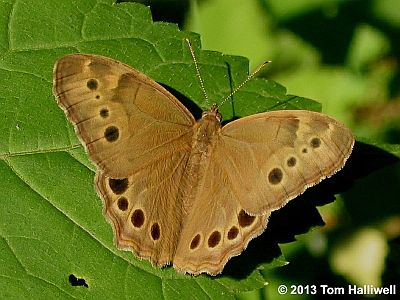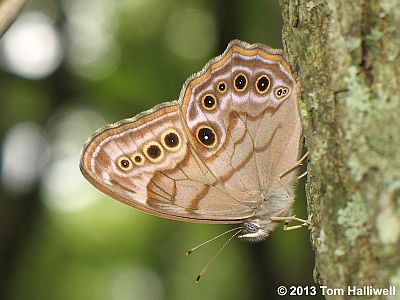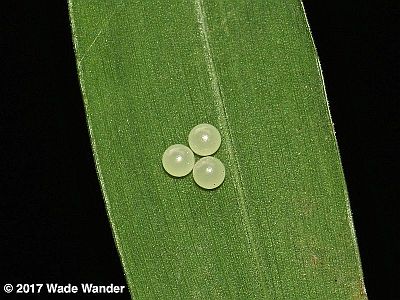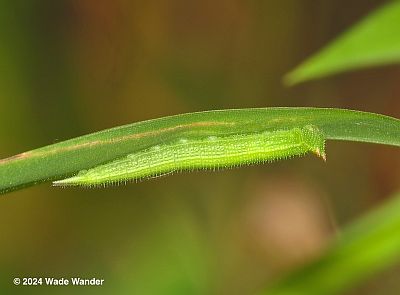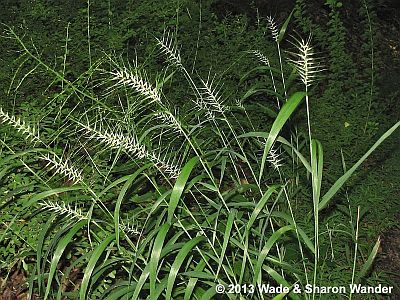New Jersey Butterfly Club
A chapter of the North American Butterfly Association (NABA)
Northern Pearly-eye
Enodia anthedon
Identification: Small—1.9". Above: FW and HW pale brown with prominent dark eyespots, mostly larger on the HW. Rarely seen with open wings. Below: Generally brown (lilac-shaded in fresh individuals), with a series of large, yellow-ringed black eyespots on both wings. Bold white lines surrounding the rows of eyespots are much more prominent than in Eyed and Appalachian Browns. HW margin noticeably scalloped.
NJ Status and Distribution: Resident. Uncommon south to Hunterdon and Somerset counties. Probably occurs in forested areas of Essex and Union counties as well.
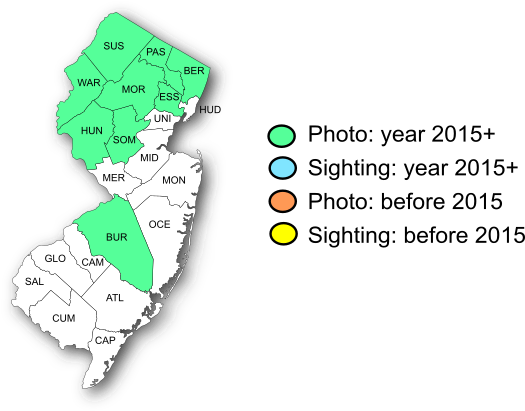
Habitat: Mesic woodlands, where it usually perches on the ground. When flushed it has a habit of landing on trees with its head pointing downward.
Flight Period: One brood, mid-June to early September. Extreme dates: North Jersey 6/12—9/4; South Jersey 8/18—8/25 (2 records both from 2024).
Caterpillar Food Plants: A wide variety of woodland grasses. Bottlebrush Grass (Elymus hystrix) is the most easily identifiable.
Overwintering Stage: Caterpillar.
Good Locations: Delaware Water Gap NRA, Whittingham WMA, Kittatinny Valley SP, White Lake NRA, Appalachian Trail Lands.
Comments: Look for this subtly beautiful butterfly in dappled shade on dirt woodland roads and trails.
